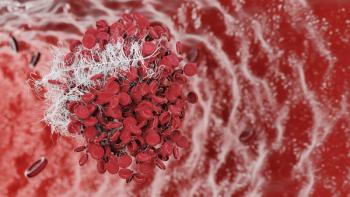
Non-oral PrEP Options Are Being Investigated to Improve Patient Adherence
Additional non-oral options could provide more manageable forms of PrEP treatment for patients, potentially increasing global uptake of PrEP in the future.
Since the approval of the first pre-exposure prophylaxis (PrEP) treatment of emtricitabine/tenofovir disoproxil fumarate (FTC/TDF) in 2012, the uptake of PrEP has remained low. Less than 10% of people eligible for PrEP have accessed the therapy as of 2016.1
Additionally, the more recent approval of emtricitabine/tenofovir alafenamide for PrEP in 2019 offered a second option for people with intolerance or contraindications to FTC/TDF, broadening the options available for PrEP use.
Outside of FTC/TDF and emtricitabine/tenofovir alafenamide, other sustained-release PrEP dosage forms to ease adherence by avoiding the need for daily adherence are also in various clinical trial stages but are not yet approved. These additional options could provide potentially more manageable forms of the treatment for patients.2
Long-acting Injectable Cabotegravir
Long-acting injectable cabotegravir (LA-CAB), a second-generation integrase strand transfer inhibitor, was studied in the phase 2 trial HPTN 077, which found that LA-CAB for PrEP was well tolerated and safe.3
The ÉCLAIR study of 115 healthy men not at high risk of acquiring HIV revealed overall satisfaction with injectable PrEP with few discontinuations, despite a high incidence of grade 2 injection-site pain.4
The HPTN 083 trial demonstrated that long-acting cabotegravir was 69% more effective than FTC/TDF for PrEP,5 while the HPTN 084 trial reported that long-acting cabotegravir was safe and superior to oral FTC/TDF for cisgender women in sub-Saharan Africa.6
Vaginal Rings
Female-initiated PrEP may exist in the future in different forms, including intravaginal rings such as dapivirine, a non-nucleoside reverse transcriptase inhibitor, or tenofovir, a nucleoside reverse transcriptase inhibitor, which are both currently being investigated as PrEP options.
A study of 96 females aged 15 to 17 years in the United States found a high adherence and acceptability of the dapivirine vaginal ring.7 Specifically, participants reported no ring discomfort at 87% of study visits and reported “liking” the ring formulation at over 90% of visits.
A phase 1 study of a tenofovir vaginal ring revealed the need to discontinue ring use in the tenofovir arm due to ulcerations.8 Further data are needed to elucidate if this adverse event is specific to the ring formulation or associated with tenofovir topical formulations.
Mucoadhesive Vaginal Discs
Another potential female-initiated PrEP regimen may come in the form of a vaginal disc. The flat, circular shape of the disc allows for comfortable administration and mucoadhesion.9 Both tenofovir and dapivirine discs have been studied with promising results.9
These discs may be an appropriate option for “on-demand” vaginal use, administered immediately before sexual intercourse. A combination of dapivirine and levonorgestrel is also under investigation for this type of use as well.10
Implants
Implants allow for more predictable pharmacokinetics than intramuscular injections.11 Islatravir, a nucleoside reverse transcriptase translocation inhibitor, is also under investigtaion to treat and prevent HIV. The long half-life of islatravir (50 to 60 hours) will allow for weekly or less frequent dosing.2 This agent is being formulated as a tablet and a long-acting implant device.12
Sustained-release dosage forms are being investigated to aid adherence and provide more agents in the PrEP armamentarium. As more data accumulate and innovative formulations are ultimately approved, it is hoped that these novel options will result in a global increase in the uptake of PrEP.
REFERENCES
1. Huang YA, Zhu W, Smith DK, Harris N, Hoover KW. HIV Preexposure Prophylaxis, by Race and Ethnicity - United States, 2014-2016. MMWR Morb Mortal Wkly Rep. 2018;67(41):1147-1150. doi: 10.15585/mmwr.mm6741a3.
2. Coelho LE, Torres TS, Veloso VG, Landovitz RJ, Grinsztejn B. Pre-exposure prophylaxis 2.0: new drugs and technologies in the pipeline. Lancet HIV. 2019;6(11):e788-e799. doi: 10.1016/s2352-3018(19)30238-3.
3. Landovitz RJ, Li S, Grinsztejn B, et al. Safety, tolerability, and pharmacokinetics of long-acting injectable cabotegravir in low-risk HIV-uninfected individuals: HPTN 077, a phase 2a randomized controlled trial. PLoS Med. 2018;15(11):e1002690. doi: 10.1371/journal.pmed.1002690.
4. Murray MI, Markowitz M, Frank I, et al. Satisfaction and acceptability of cabotegravir long-acting injectable suspension for prevention of HIV: Patient perspectives from the ECLAIR trial. HIV Clin Trials. 2018;19(4):129-138. doi: 10.1080/15284336.2018.1511346.
5. Kirby T. Cabotegravir, a new option for PrEP. Lancet Infect Dis. 2020;20(7):781. doi: 10.1016/s1473-3099(20)30497-7.
6. HIV Prevention Trials Network. HPTN 084 Study Demonstrates Superiority of CAB LA to Oral FTC/TDF for the Prevention of HIV. Published on November 9, 2020. Accessed November 14, 2020.
7. Bunge KE, Levy L, Szydlo DW, et al. Brief Report: Phase IIa Safety Study of a Vaginal Ring Containing Dapivirine in Adolescent Young Women. J Acquir Immune Defic Syndr. 2020;83(2):135-139. doi: 10.1097/qai.0000000000002244.
8. Keller MJ, Wood L, Billingsley JM, et al. Tenofovir disoproxil fumarate intravaginal ring for HIV pre-exposure prophylaxis in sexually active women: a phase 1, single-blind, randomised, controlled trial. Lancet HIV. 2019;6(8):e498-e508. doi: 10.1016/s2352-3018(19)30145-6.
9. Notario-Pérez F, Martín-Illana A, Cazorla-Luna R, et al. Mucoadhesive Vaginal Discs based on Cyclodextrin and Surfactants for the Controlled Release of Antiretroviral Drugs to Prevent the Sexual Transmission of HIV. Pharmaceutics. 2020;12(4). doi: 10.3390/pharmaceutics12040321.
10. Li J, Regev G, Patel SK, et al. Rational Design of a Multipurpose Bioadhesive Vaginal Film for Co-Delivery of Dapivirine and Levonorgestrel. Pharmaceutics. 2019;12(1). doi: 10.3390/pharmaceutics12010001.
11. Weld ED, Flexner C. Long-acting implants to treat and prevent HIV infection. Curr Opin HIV AIDS. 2020;15(1):33-41. doi: 10.1097/coh.0000000000000591
12. Barrett SE, Teller RS, Forster SP, et al. Extended-Duration MK-8591-Eluting Implant as a Candidate for HIV Treatment and Prevention. Antimicrob Agents Chemother. 2018;62(10). doi: 10.1128/aac.01058-18.
Newsletter
Stay informed on drug updates, treatment guidelines, and pharmacy practice trends—subscribe to Pharmacy Times for weekly clinical insights.










































































































































































































